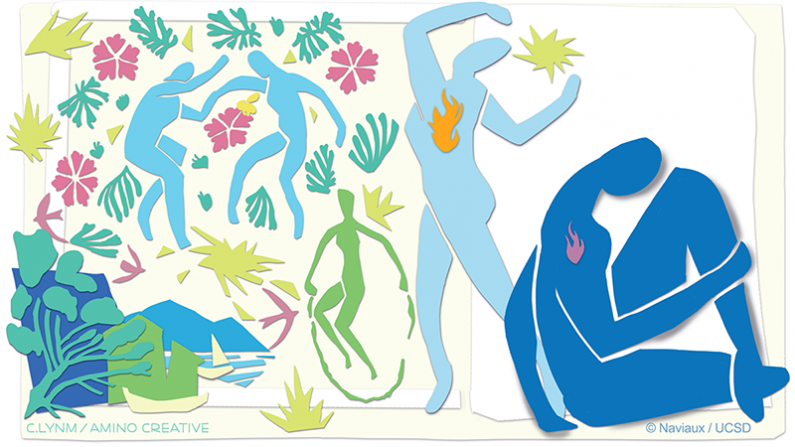
| Box 1
DSM-5 Diagnosis of Major Depressive Disorder (MDD) 5 or more of the following 9 symptoms lasting at least 2 weeks and be severe enough to impair social or occupational function:
Diagnosis of Recurrent MDD (rMDD)
|
Depression
Depression causes our connections to friends and family to disintegrate and our view of the horizon to close in upon us. Suicidal thoughts can creep in when hope for a better future is lost. Over 20% of people will suffer an episode of major depressive disorder (MDD) or bipolar disorder (BD) in their lifetimes and 5% to 20% of people will have a life-altering struggle with depression in a given year. Adolescents and young adults ages 12-25 are at greatest risk1,2. The effects of depression in adolescents can be particularly devastating and can last a lifetime3.
Current anti-depressant medications are based on a “theory of mind” that is brain-focused and may only help 50%-60% of people who take them4. Side-effects from current medications are severe and widespread enough to cause patients to stop treatment more often than if they had received treatment with a placebo5.
Our research asks the question, “Can new treatments with fewer side-effects be discovered if a whole-body, metabolomic and exposomic approach is used?6” Our recent studies show that metabolomics can be over 90% accurate in predicting which patients with a recurrent history of MDD (rMDD) will suffer a recurrence up to 2.5 years on the future. This happens in part because the brain controls whole-body metabolism. This work has revealed a mitochondrial nexus in rMDD. By coordinating with both brain and body signals, mitochondria regulate the metabolic pathways that determine health and resilience in response to changing environmental conditions7,8, and facilitate healing and recovery9.
| Box 2
Suicide Statistics
|
Suicide
Suicidal thoughts can also occur in the absence of depression. Chronic pain, bullying, debilitating illness, social isolation, sexual abuse, anxiety, addiction, thoughts of guilt, shame, failure, or fear can lead to suicidal thoughts. Our studies have shown that the strongest predictors or risk of suicide and the risk the recurrence of an episode of depression are gender-specific. In other words, males and females use different chemicals in overlapping metabolic pathways to resist depression and thoughts of suicide. Completed suicide is 5-10 times more common in males than females, but suicidal thoughts are disabling for anyone. The suicide risk associated with autism spectrum disorder (ASD) is 5-10-times greater than typically developing children and adults12-14. Suicide is also a leading cause of mortality in post-traumatic stress disorder (PTSD)15,16, and myalgic encephalomyelitis/chronic fatigue syndrome (ME/CFS)17.
See the web resources links below for additional information. For immediate help you can call the National Suicide Prevention Lifeline at 800-273-8255, or visit their web page at: https://suicidepreventionlifeline.org.
Web Resources
- https://ucsdnews.ucsd.edu/pressrelease/metabolism-may-play-role-in-recurrent-major-depression
- https://www.ncbi.nlm.nih.gov/books/NBK361016/
- https://www.who.int/news-room/fact-sheets/detail/depression
- https://www.nimh.nih.gov/health/statistics/suicide.shtml
- https://en.wikipedia.org/wiki/Suicide_in_the_United_States
- https://naviauxlab.ucsd.edu/science-item/healing-and-recovery/
References
- Malhi, G.S. & Mann, J.J. Depression. Lancet 392, 2299-2312 (2018).
- Hasin, D.S., et al. Epidemiology of Adult DSM-5 Major Depressive Disorder and Its Specifiers in the United States. JAMA psychiatry 75, 336-346 (2018).
- Salokangas, R.K.R., Luutonen, S., Heinimaa, M., From, T. & Hietala, J. A study on the association of psychiatric diagnoses and childhood adversities with suicide risk. Nord J Psychiatry 73, 125-131 (2019).
- Cipriani, A., et al. Comparative efficacy and acceptability of 21 antidepressant drugs for the acute treatment of adults with major depressive disorder: a systematic review and network meta-analysis. Lancet 391, 1357-1366 (2018).
- Sharma, T., Guski, L.S., Freund, N., Meng, D.M. & Gotzsche, P.C. Drop-out rates in placebo-controlled trials of antidepressant drugs: A systematic review and meta-analysis based on clinical study reports. Int J Risk Saf Med 30, 217-232 (2019).
- Mocking, R.J.T., et al. Metabolic features of recurrent major depressive disorder in remission, and the risk of future recurrence. Translational psychiatry 11, 37 (2021).
- Naviaux, R.K. Perspective: Cell danger response biology-The new science that connects environmental health with mitochondria and the rising tide of chronic illness. Mitochondrion 51, 40-45 (2020).
- Naviaux, R.K. Incomplete Healing as a Cause of Aging: The Role of Mitochondria and the Cell Danger Response. Biology (Basel) 8(2019).
- Naviaux, R.K. Metabolic features and regulation of the healing cycle-A new model for chronic disease pathogenesis and treatment. Mitochondrion 46, 278-297 (2019).
- Weinberger, A.H., et al. Trends in depression prevalence in the USA from 2005 to 2015: widening disparities in vulnerable groups. Psychological medicine 48, 1308-1315 (2018).
- Hedegaard, H., Curtin, S.C. & Warner, M. Suicide Mortality in the United States, 1999-2017. NCHS Data Brief, 1-8 (2018).
- Chen, Y.Y., Chen, Y.L. & Gau, S.S. Suicidality in Children with Elevated Autistic Traits. Autism research : official journal of the International Society for Autism Research 13, 1811-1821 (2020).
- Richa, S., Fahed, M., Khoury, E. & Mishara, B. Suicide in autism spectrum disorders. Arch Suicide Res 18, 327-339 (2014).
- Hirvikoski, T., et al. Premature mortality in autism spectrum disorder. The British journal of psychiatry : the journal of mental science 208, 232-238 (2016).
- Stanley, I.H., Rogers, M.L., Hanson, J.E., Gutierrez, P.M. & Joiner, T.E. PTSD symptom clusters and suicide attempts among high-risk military service members: A three-month prospective investigation. J Consult Clin Psychol 87, 67-78 (2019).
- Tarrier, N. & Gregg, L. Suicide risk in civilian PTSD patients–predictors of suicidal ideation, planning and attempts. Social psychiatry and psychiatric epidemiology 39, 655-661 (2004).
- Johnson, M.L., Cotler, J., Terman, J.M. & Jason, L.A. Risk factors for suicide in chronic fatigue syndrome. Death Stud, 1-7 (2020).

